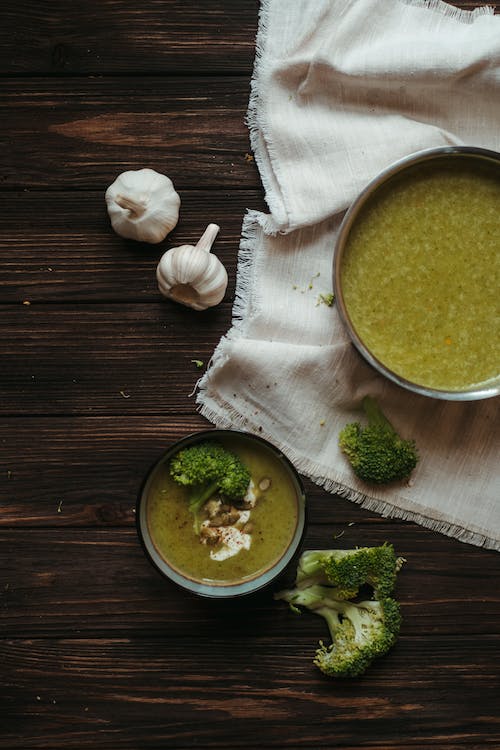If you’re looking for easy ways to make your recipes gluten-free, you’ve come to the right place! In this blog post, we will discuss eight different methods that you can use to make your favorite dishes gluten-free.
Whether you’re cooking for a friend or family member who has Celiac disease, or if you just want to try out some new gluten-free recipes, these tips will help make the process a little easier. Let’s get started!

1. Using Soy Flour
If you’re looking for a simple way to make your recipes gluten-free, soy flour is a great option.
This type of flour is made from ground soybeans, and it can be used as a replacement for wheat flour in many recipes. When baked goods are made with soy flour, they tend to be denser than those made with wheat flour.
However, they can still be delicious! If you’re using soy flour as a replacement for wheat flour, you’ll need to use less of it since it is dense. You’ll also want to add some extra baking powder to help the baked goods rise.
2. Use a Gluten-Free Flour Blend
If you don’t want to use soy flour or you’re looking for a gluten-free flour that more closely resembles wheat flour, you can try using a gluten-free flour blend.
These blends are made with a variety of different flours, including rice flour, potato starch, and tapioca flour. They often also contain xanthan gum, which helps to bind the ingredients together and gives the baked goods a chewier texture.
When using a gluten-free flour blend, be sure to follow the package directions so that you use the correct ratio of ingredients.
3. Create a Slurry with Cornstarch or Arrowroot Powder
Another option for making your recipes gluten-free is to create a slurry with cornstarch or arrowroot powder. To do this, you’ll need to mix the cornstarch or arrowroot powder with water until it forms a thick liquid.
You can then add this mixture to your recipe in place of the wheat flour. This method works well for thickening sauces and gravies.
It’s also a good option for baked goods that don’t require a lot of rising, such as pies and cookies.
4. Use Almond Meal or Ground Nuts
Almond meals and ground nuts are other great options for making your recipes gluten-free. These ingredients can be used as a replacement for wheat flour in many recipes.
When using almond meals or ground nuts, you’ll need to use less of them since they are denser than wheat flour.
You may also want to add some extra baking powder to help the baked goods rise, as we mentioned above. When some recipes call for finely ground nuts, you can usually get away with using a food processor to roughly chop them before adding them to the recipe.
5. Use Coconut Flour
If you’re looking for gluten-free flour that has a bit of sweetness to it, coconut flour is a good option.
This type of flour is made from ground coconut, and it can be used as a replacement for wheat flour in many recipes.
When using coconut flour, you’ll need to use less of it since it is denser than wheat flour. You’ll also want to add some extra liquid to the recipe since coconut flour absorbs moisture.
Coconut flour is a good option for baked goods that are going to be on the sweeter side, such as cookies and cakes.
6. Swap Out Wheat Germ for Another Ingredient
If you’re looking for a way to add some nutrition to your gluten-free recipes, you can swap out the wheat germ for another ingredient.
Wheat germ is a good source of fiber and vitamins, but it also contains gluten. You can easily find gluten-free substitutes for wheat germs, such as flaxseed meals or chia seeds.
These ingredients can be added to recipes in place of wheat germ. Just be sure to use the same amount so that the recipe turns out correctly.
7. Use Fruit and Vegetable Purees
Fruit and vegetable purees are another great option for making your recipes gluten-free. This method works well for baked goods, such as cakes, muffins, and quick pieces of bread. You can use any type of fruit or vegetable puree that you like. Some good options include applesauce, mashed bananas, and pumpkin puree. Just be sure to use the same amount of puree as you would wheat flour. When using fruit or vegetable purees, you may also need to add some extra liquid to the recipe.
8. Try using rolled oats
Rolled oats are a type of oat that has been steamed and rolled flat. They are a good option for making your recipes gluten-free since they don’t contain any gluten. You can use rolled oats in place of wheat flour in many recipes, such as cookies, bars, and quick pieces of bread. When using rolled oats, you’ll need to use less of them since they are denser than wheat flour. You may also want to add some extra liquid to the recipe so that the baked goods don’t turn out too dry, as the option above. It’s also a good idea to pulse the oats in a food processor before adding them to the recipe so that they are easier to work with.
9. Use quinoa flakes instead of breadcrumbs
If you’re looking for a way to add some extra protein to your recipes, quinoa flakes are a good option. They can be used in place of breadcrumbs in many recipes, such as meatballs and casseroles. Quinoa flakes are also a good option for making gluten-free pancakes and waffles. When using quinoa flakes, you’ll need to use less of them since they are denser than wheat flour. You may also want to add some extra liquid to the recipe so that the food doesn’t turn out too dry.
Making your recipes gluten-free doesn’t have to be difficult. With a few simple substitutions, you can easily make your favorite recipes gluten-free. So, if you’re looking to cut gluten out of your diet, or if you need to make a recipe gluten-free for someone with celiac disease or a gluten allergy, give these tips a try. Good luck!





![33+ Delicious Dessert Table Ideas on a Budget [2025] 7 dessert table ideas graduation party 3](https://www.momooze.com/wp-content/uploads/dessert-table-ideas-graduation-party-3.jpg)
